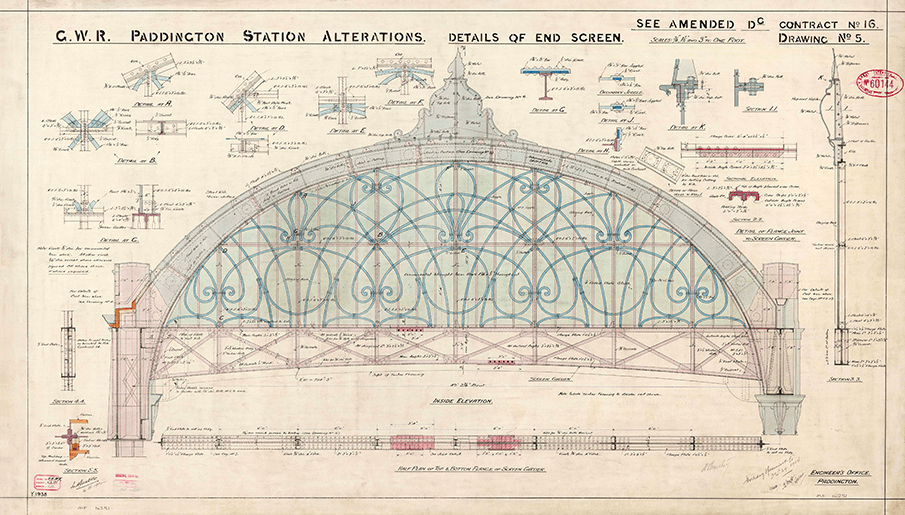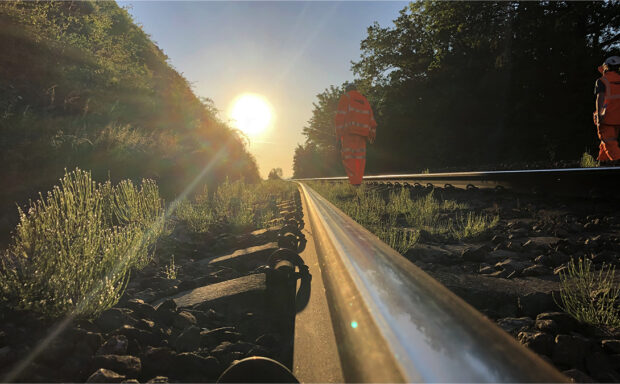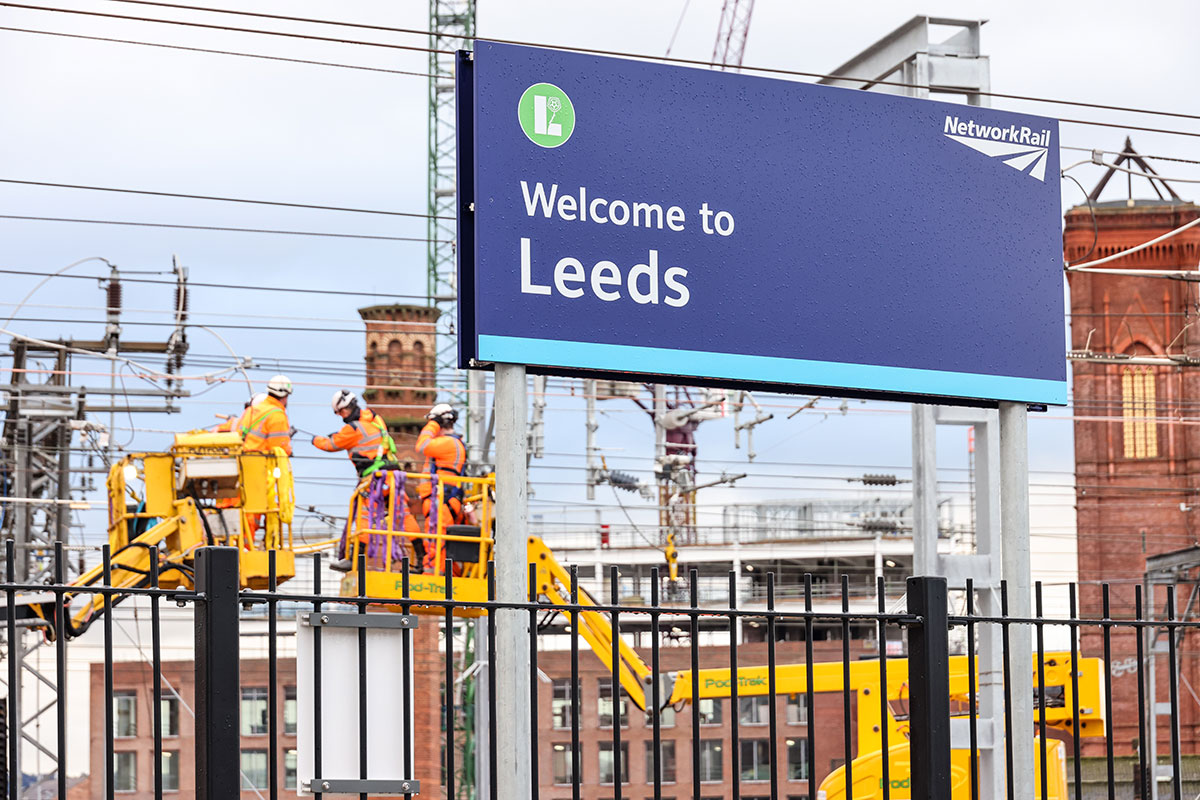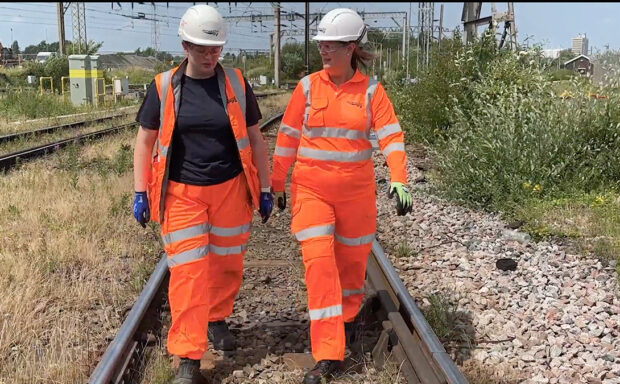Archivist Vicky Stretch introduces the wealth of historical information available to help run the railway – and how we look after it.
Today’s railway relies on big data, live feeds, 3D modelling, online tools, instant access and GPS.
The railway produces a vast amount of digital information – all in zeros and ones, stored on cloud-based servers and transmitted down high-speed internet cable to handheld devices.
It has always produced vast quantities of information. In the past, this was recorded on handmade paper and parchment with wax seals, and these documents still have an important part to play in today’s 21st-century railway.
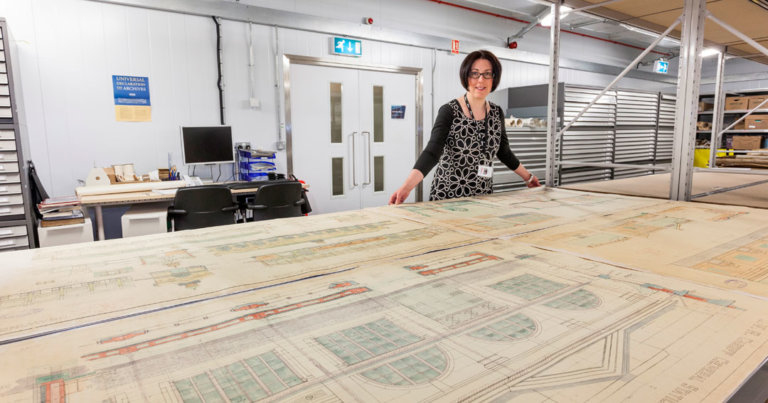
Records management for the digital age
The home of this railway record is Network Rail’s National Records Centre, where records are kept safe and secure until needed. Although it is a state of the art archive repository on the outskirts of York, it is not a museum to the railway’s hardcopy information age.
Here we manage the handover and handback of millions of digital records relating to the railway infrastructure every year. We support colleagues using digital content management systems for the management of corporate records. We are the repository of data sets that power new signalling systems and we issue secure access codes for ERTMS.
We can also take our papers and parchments and digitally scan them – turning them into ones and zeros for instant access to information and collaboration between colleagues.
Beginnings
The National Records Centre opened in 2008 and is the amalgamation of 11 regional record centres that grew up through the original railway companies, through the British Rail regions and the Railtrack Zones.
The decision to move the regional centres to the National Records Centre was driven by a need to improve the storage facilities for our record keeping, as well as streamlining processes for easy and timely access to documentation for the people who need it.
It was at this point that Network Rail decided to establish an archivist role and I joined the organisation.
Collections
The National Records Group manages four distinct collections: engineering; signalling; the railway registry of deeds and the Corporate Archive.
The signalling collection is primarily digital and focuses very much on what is there in operation today. In terms of historical information there is very little that is kept – unless a signal box is closing down and then we will keep drawings relating to the last configuration of the box.
The civil engineering collection is very different and is much more like a jigsaw. It dates back to the 19th century and the earliest days of the railway. Drawings can be pieced together to tell the story of the development of the infrastructure; a particular bridge, station or tunnel.
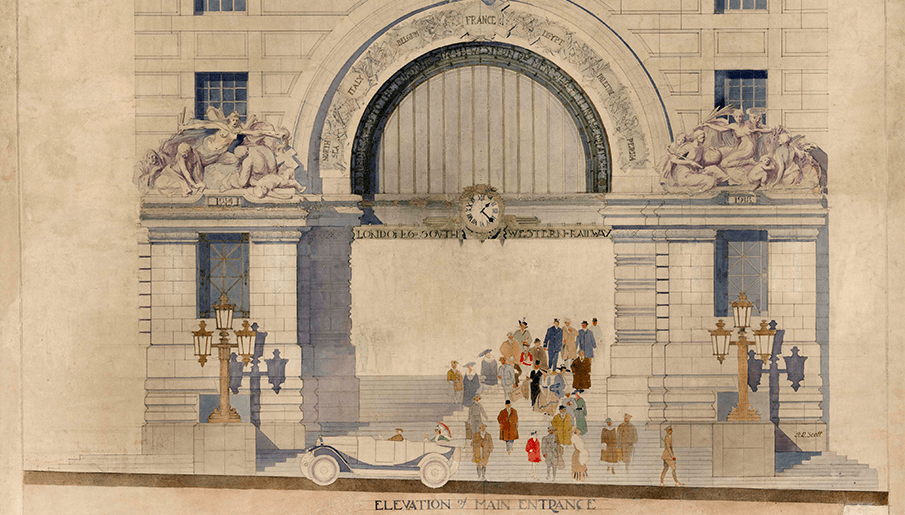
Railway bridges, tunnels and viaducts today
It is a collection of ‘as built’ drawings and proposed drawings that together show the ideas, the complexity, the detailed construction and the architectural design of the most iconic railway structures right down to the tiniest culvert and the rivets in girders.
The registry of deeds is designed for the sleuth in all of us. Deed packets are often arranged in original company order, so knowing your railway company family tree can be crucial in tracking down that one agreement or conveyance that will solve the puzzle.
The collection is primarily 19th century – the railway company bought the land and it often hasn’t changed hands since – but pre-title documents inherited by the railway company when they bought the land means the collection actually dates back to the 16th century and has a rich seam of royalty, dukes, duchesses, prime ministers and prominent figures from history represented throughout it.
The majority of railway land is unregistered, so this registry of deeds proves our ownership of the operational railway estate. It also protects our rights, assigns responsibility for liabilities and is crucial in just about every part of maintaining, operating and developing the railway.
If anything was ever amiss at the National Records Centre this is the collection we would get out first. Although I have to say we do have state of the art fire detection and suppression systems, as well as temperature and humidity controls, so the risk is well mitigated!
The Network Rail Corporate Archive is primarily digital and is the permanent record of the company since it was established in 2002. We are mandated to keep a modern business archive because key business records – board and executive minutes, major project files, operational records and communication materials for example – are all designated under the Railway Heritage Act.
Our ‘engineering inheritance’
Alongside this, I manage an archive of what I call our ‘engineering inheritance’. This is a collection of selected drawings that represent the most important historical developments in railway infrastructure engineering, the most iconic structures and stations and the most eminent engineers.
We will take a station like London Waterloo for example and we will examine its history to identify the key points in the station’s development. We will then retrieve all the drawings for the station – there could well be thousands – and identify the key drawings that tell the story. We then take these drawings into the engineering inheritance collection for the permanent Corporate Archive.
Those drawings not selected – those for toilet cubicles from 1983 for example – will still be retained by Network Rail, as they may contain important information about drainage in this example, but they are not sprinkled with that magic that allows them to have a place in the historic collection.
Drawings are then conserved – and we receive a generous grant from the Railway Heritage Trust that contributes to this work – and then they are photographed so they can be used in different ways to support the business.
Why do we need historical information?
Every single day, historical information that we manage and keep securely in a warehouse on the outskirts of York saves us, and therefore the taxpayer, significant amounts of time and money.
It proves our ownership, it enables us to assert our rights, but points out our own obligations where we have them.
Historical documentation helps us to make the railway safer; it enables us to react clearly to events and informs long-term planning and major projects.
It helps us to be more open about the challenges we face in delivering the biggest investment in the railway since Victorian times.
Externally, historical documentation helps us support our stakeholders with their interest in the railway infrastructure, and it helps individuals and groups explore the elements of railway infrastructure for their own knowledge and learning.
It enhances our communication with people around the world, engaging them in the history of the railway in Britain.
So, while Britain runs on rail, it’s clear that the railway runs very much on historical information.
Find out more
Open data feeds from the railway
